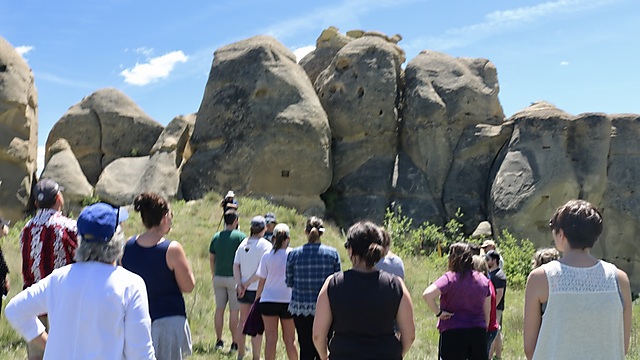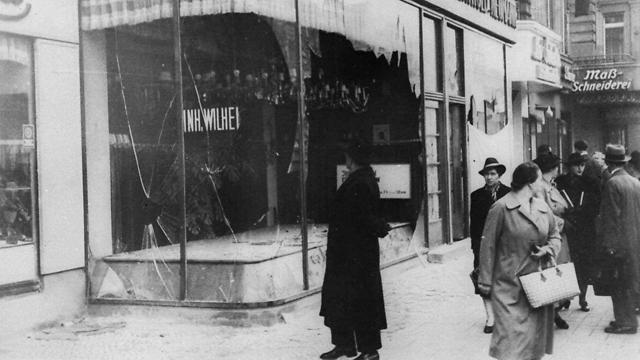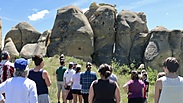
Teaching the Holocaust in Montana
The Olga Lengyel Institute uses the history of European Jewry as a prism for understanding and confronting prejudices, stereotypes and discrimination, in particular the plight of Native Americans, and how not to be silent in the face of racial oppression and genocide
Billings, Montana would seem like an unlikely place to teach the Holocaust. After all, the Holocaust happened thousands of miles away from the tranquil Big Sky country, a state with few Jewish residents.
But for some 25 educators from nearby Idaho and throughout Montana who took a week out of their summer to learn to teach the Holocaust, they found it connected them to something much closer to home: the plight of Native Americans, across America and especially in the West.
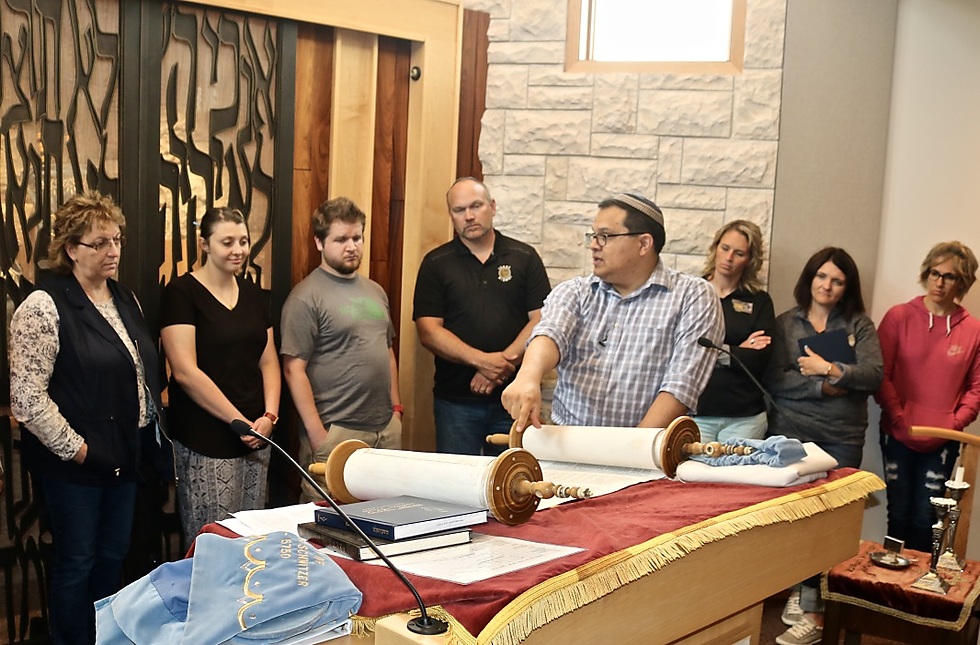
“When I visited Auschwitz, a few years ago, I wondered how did the people of the town of Auschwitz lived with the murders that took place nearby. It was only when I returned home to realize that I am living with this history of oppression and mass murder in my own back yard,” says Lacy Watson.
Watson is one of the coordinators of the Billings seminar, organized and sponsored by the Olga Lengel Institute for Holocaust Studies and Human Rights, known as TOLI.
“I grew up in Fort Benton, Montana, only 40 miles from the Marias Massacre of about 200 Indians. I never know about it until learning to teach the Holocaust brought me to become more aware of our own tragic history,” she says.
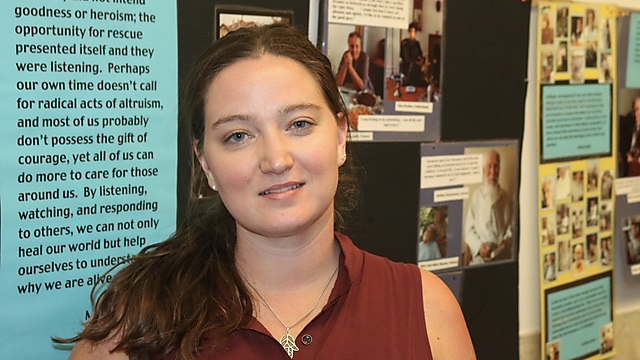
An estimated 10 million indigenous people lived in what is now the US in 1500. By 1900, only some 240,000 remained, according to an estimates by the National Congress of American Indians. Not all were killed deliberately.
Many perished due to disease, infected by Europeans, or by the destruction of the buffalo, their main source of food. But U.S. government policy of systematically expelling the Indians from their land, waging war on the tribes and dehumanization of the members ravaged the Native American population.
Brenda Johnson, another coordinator of the seminar, is herself Native American and amember of the Blackfeet Tribe. She sees the Holocaust as offering insights and parallels for students to understand their own history.
“For instance, when I teach Kristallnacht (the Nazi-fomented pogroms in Germany of November 9-10, 1938), it is reminiscent of the U.S. government excuse for planned killing of Blackfeet people.”
She referred to the killing of a government official by a Blackfeet youth, which triggered the murder of hundreds of innocent tribesmen by American soldiers.
Johnson also sees comparisons between the dehumanization of the Jews, a foundation of Nazi anti-Semitism, and that of Native Americans.
“In the late 19th century, the U.S. government took away the names, culture, and language of American Indians,” she said.
That dehumanization, she says, was reinforced by propaganda and negative stereotypes, another parallel with Nazi policy toward the Jews.
The week-long seminar in Billings, June 20-26, was an intensive immersion in both Holocaust history and U.S. polices toward Native Americans, careful not to draw comparisons but clearly seeing parallels with both the prejudices and the policies that resulted in the respective crimes against humanity.
There was also a daylong visit to a Northern Cheyenne and Crow lands, a visit to a sacred tribal ground, and concluded with a tour of the Little Bighorn battlefield. This was the site where US General George Amstrong Custer and his 7th Cavalry suffered a major defeat by a coalition of American Indian tribal forces in June 1876.
Known as “Custer’s last stand” it became an iconic event taught in American history as the killing of a heroic U.S. officer and his soldiers by merciless Indians. Left out of the narrative was that the Sioux and Cheyenne were fighting against U.S. intrusion on their lands and persecution of Native Americans, a policy for which Custer bore responsibility.
Montana’s Indian Education for All act mandates that students learn about Native American history and culture. There are different approaches to implement this Act in the schools, and the TOLI seminar serves as one model for that purpose.
Ileah Bodily, an 8th teacher from Rexburg, Idaho, also found the seminar to bring home a powerful message.
“I’ve learned so much that I can bring into my classroom, particularly ways to teach my students about the land on which they lived. And how we benefited from the destruction that took place in our own country,” she says.
The program, however, does not just look at the history. It uses the Holocaust as a prism for understanding and confronting prejudices, stereotypes and discrimination. And, in particular, not to be silent in the face of racial oppression and genocide.
“What stood out for me this week is is what a role silence plays,” says Amber Erikson, a teacher from Seco, Montana, referring to bystanders during the Holocaust and the attacks on Native Americans. “And I see it in our own school, when a minority is singled out by other students.”
TOLI conducts seminars for teachers throughout the U.S., where over 2500 teachers have participated in the programs. It is also active in Europe with similar programs, this year in eight countries, including Poland, Italy and Lithuania. These professional development seminars are tailored for specific regions and countries, relating to history and population. For Montana, that meant focusing upon the Native American experience.
Wendy Zagray Warren, TOLI satellite seminar coordinator and former Montana eduator says: “I think any time you're talking about history, that the key is to find ways to make it relevant today so that they understand what they see in the present by looking at what led up to it in the past.”
TOLI seminars, she says, are intense five-day experiences. “Teachers arrive as strangers and leave as friends, as community is carefully built.”
While each seminar has different character, there is a common thread that runs through the programs.
“I think with all Holocaust education, our duty is to remember the past to honor those who experienced the worst of humankind, those both who died and who survived,“ says Lacy Watson. "And to do the very best we can do to make sure that it doesn't happen again.”
The writer is member of the Board of Directors of the Olga Lengyel Institute for Holocaust Studies and Human Rights, www.TOLInstitute.org










